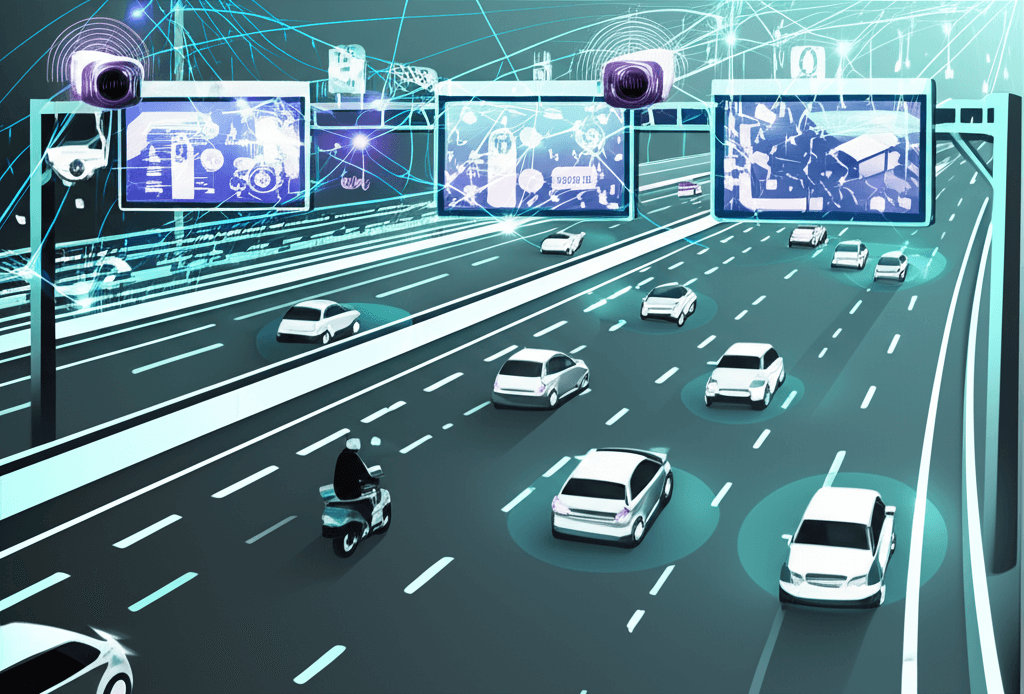AI Arrives: Delhi Activates India's First Smart Traffic Management System
India's capital launches AI-powered traffic control, promising smoother commutes and a national blueprint for urban mobility.
June 26, 2025

In a landmark move to combat crippling traffic congestion and enhance road safety, India has deployed its first artificial intelligence-powered traffic management system in Delhi. This ambitious initiative, centered on the newly developed Dwarka Expressway, represents a significant leap towards creating smarter, safer, and more efficient urban mobility. The Advanced Traffic Management System (ATMS) is now operational along the entire 28.46-kilometer Dwarka Expressway and an adjoining 28-kilometer section of NH-48, creating a 56.46-kilometer intelligent corridor.[1][2][3] This project is being positioned as a national model for leveraging AI in traffic governance, aligning with the National Highways Authority of India's (NHAI) 2023 guidelines for modernizing the country's highway infrastructure.[1][2][3] The system's implementation marks a critical step in a broader strategy to address Delhi's infamous traffic woes, a city that in 2018 saw drivers spend 58 percent more time stuck in traffic than in any other city globally.[4]
The core of this new infrastructure is a multi-layered technological approach designed for real-time monitoring, incident detection, and automated enforcement. The system is comprised of five major components working in unison.[2] A network of 110 high-resolution pan-tilt-zoom cameras, part of the Traffic Monitoring Camera System (TMCS), has been installed at one-kilometer intervals to provide continuous, 24/7 surveillance of the entire stretch.[2] This is complemented by the Video Incident Detection and Enforcement System (VIDES), which uses AI to identify accidents, obstructions, and a range of traffic violations in real-time.[2][5] Further enhancing driver awareness, a Vehicle Actuated Speed Display System (VASD) provides immediate feedback to motorists about their speed, while Variable Message Signboards (VMS) are used to disseminate crucial information regarding traffic conditions, weather alerts, and potential hazards.[2][5] All these elements are coordinated through a central control room, which acts as the digital brain of the corridor, enabling rapid emergency response and seamless data integration.[2][3][6]
The artificial intelligence at the heart of the ATMS is engineered to perform a variety of complex tasks that were previously reliant on manual intervention. The AI algorithms are capable of detecting up to 14 distinct types of traffic violations, including common offenses such as speeding, not wearing a seatbelt, and triple riding on two-wheelers.[2][5] Beyond simple enforcement, the system is designed for predictive traffic flow management, analyzing historical and real-time data to anticipate congestion and dynamically adjust traffic signals to optimize flow.[7] This data-driven approach allows for in-depth analysis of traffic patterns, vehicle classification, and congestion levels, providing invaluable insights for both immediate operational decisions and long-term urban planning.[8][9] The system integrates with existing national databases like VAHAN and SARTHI and is aligned with the NIC E-challan portal, allowing for the automated sharing of violation data with the police department for prompt enforcement action.[8][3] This automation aims to streamline law enforcement, reduce human error, and cultivate a greater sense of discipline among drivers.[8][10]
This initiative is part of a larger, city-wide vision to modernize Delhi's traffic infrastructure. The Delhi government has also floated tenders for an Intelligent Traffic Management System (ITMS) to be installed at 500 key junctions across the city.[8][9] This broader system will also employ AI and deep learning through an Automatic Number Plate Recognition (ANPR) system to monitor violations in real-time, including red-light infractions, mobile phone usage while driving, and improper lane discipline.[8][9][11] The goal is to create a centralized traffic database that assimilates data from thousands of cameras, providing a comprehensive overview of the city's traffic dynamics.[8] The implementation of these systems is seen as crucial for a city grappling with over 117 identified traffic choke points and millions of pending traffic challans.[12][13][14] The expected outcomes include not just a reduction in congestion and travel times, but also a significant improvement in road safety, a critical concern in a country with a high rate of traffic fatalities.[15]
The deployment of AI-powered traffic management in Delhi signals a paradigm shift in how Indian cities approach urban mobility challenges. By moving from traditional, manual methods to a sophisticated, data-centric model, authorities are aiming to create a more responsive, efficient, and safer road network. The success of the Dwarka Expressway pilot project will be closely watched, as it is intended to serve as a replicable model for other major highways and cities across India.[3][16] While the focus is heavily on enforcement and efficiency, officials have also emphasized the role of these systems in public education and promoting a culture of road safety.[2][5] This initiative represents a significant investment in the AI industry and smart city infrastructure, potentially paving the way for further integration of advanced technologies in solving complex urban problems, from pollution control to public transport optimization.[7][4] The journey towards smarter, AI-driven cities in India has taken a decisive step forward on the roads of its capital.